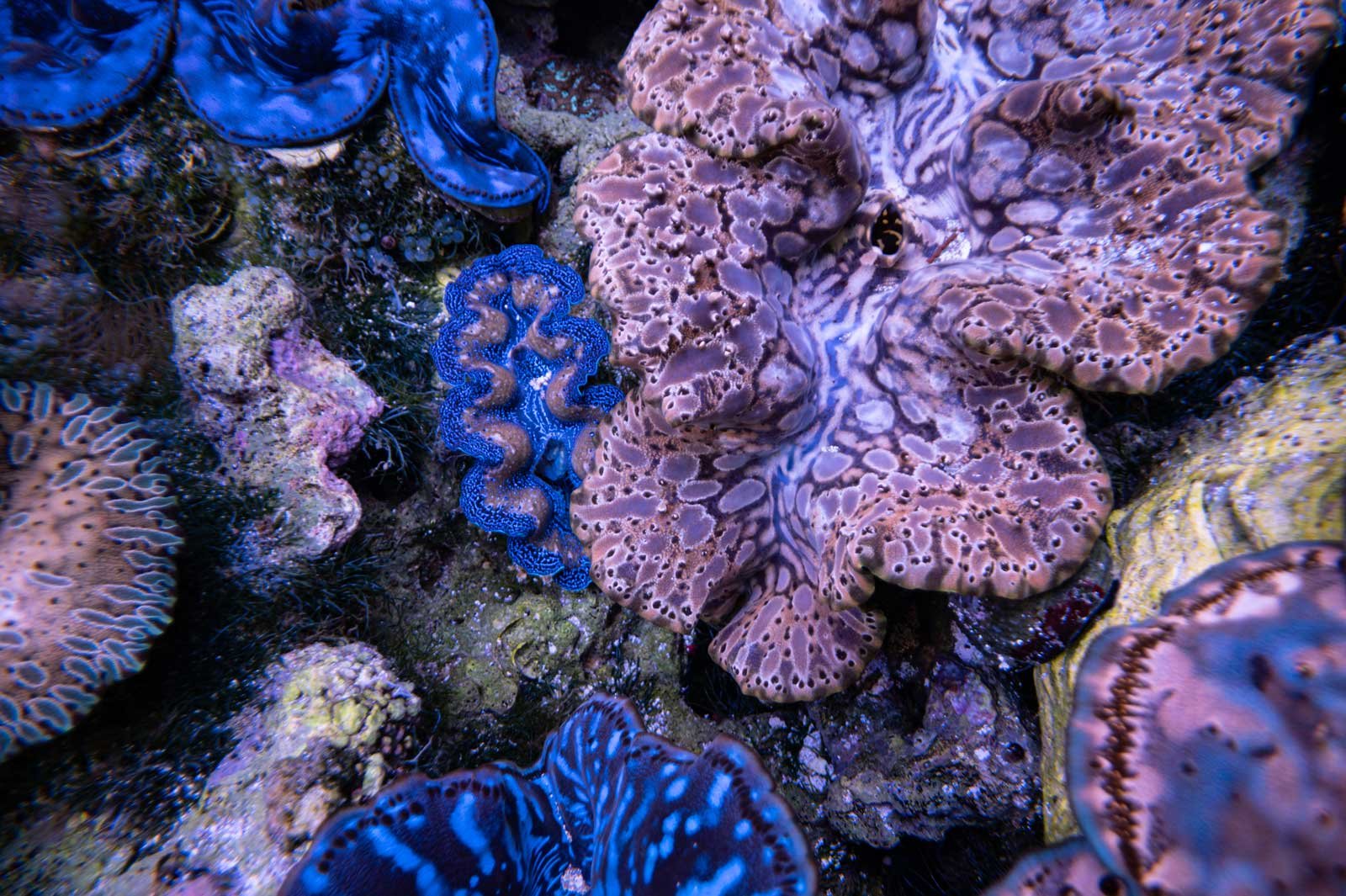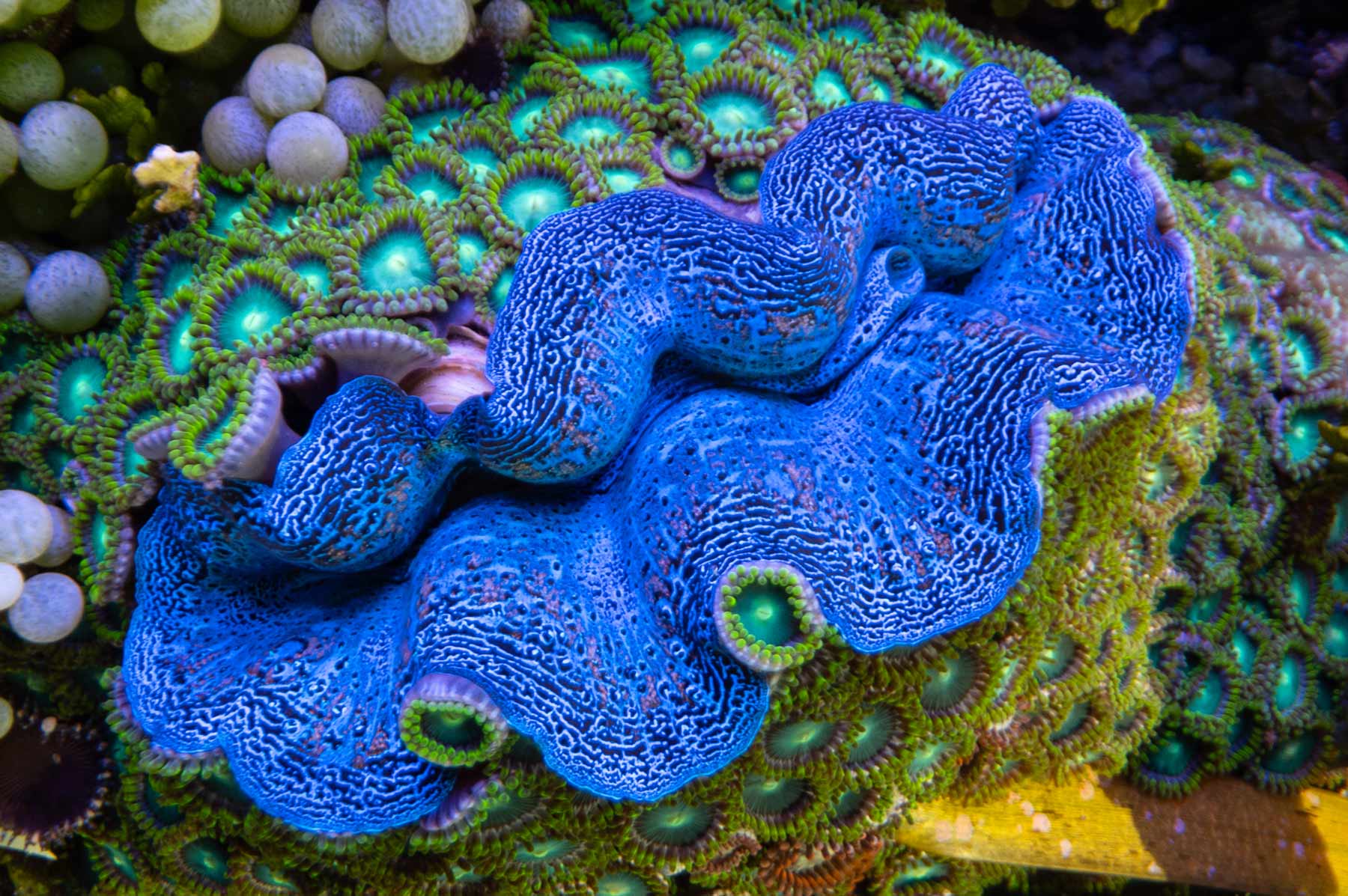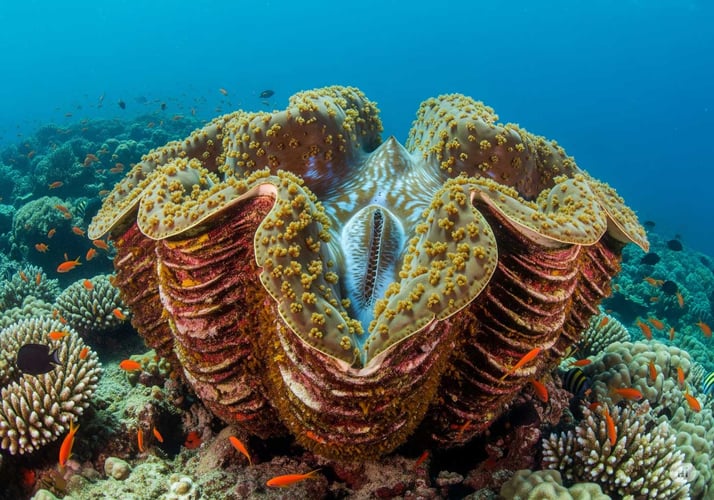
Pioneering novel research in reef restoration and carbon capture
through innovative marine science practices
As published on

The International Marine Science and Carbon Sequestration Foundation (IMARCS)
We are piloting groundbreaking research in reef ecosystems and mangrove environments to benefit life under the sea and on land. Our current efforts utilize saltwater tanks in Japan and Canada, a research lab in Spain, a giant clam hatchery in Micronesia, and field research in the reefs of Vietnam and the coasts of Belize.



Our Mission
To pioneer innovative mariculture solutions that remove CO2 from the air, restore marine ecosystems, and strengthen local communities with measurable, quantifiable results.
Our Vision
A thriving and more sustainable future where mariculture and marine science help mitigate climate change by permanently storing CO2 in calcifying organisms, while also creating healthier reef ecosystems and resilient coastal communities in the process.
Our Mission & Vision
To pioneer innovative marine science research that results in the removal of CO2 from the air, restoration of marine ecosystems, and strengthening of local communities with measurable, quantifiable results.
A thriving and more sustainable future where mariculture and marine science help mitigate climate change by permanently storing CO2 in coastal soil and calcifying organisms, while also creating healthier reef ecosystems and resilient coastal communities in the process.
What we're about
Removal of carbon from the atmosphere
Replenishing reefs with needed species
Restoring marine ecosystems
Reviving coastal communities
Rethinking what is possible for our future
Our Project
Developing a novel in-shore giant clam grow out methodology.
Clam Mariculture
As our main avenue for direct carbon removal, food security, and threatened species preservation, we grow multiple species of giant clams.
- Tridacna crocea
- Tridacna derasa
- Tridacna maxima
- Tridacna squamosa
- Tridacna noae
Education
We are constantly working to correct misinformation in the marine science field, especially as it pertains to coral reefs. We also partner with local schools to provide tours for students, universities to offer internships, and other foundations to expand our impact.
See our blog for the latest on our work helping to educate, elucidate, and inspire.
Reefs and mangroves are not just the bedrock of ocean ecosystems - they are vital for life on land as well.
We work with incredible people from all over the world to advance marine science and address the core areas of interest for the IMARCS Foundation:

- Biodiversity Preservation
Coral reefs are bleaching from changing temperatures, all giant clam species are threatened, and mangroves around the world are under threat from development - our research is focused on how to address these challenges and preserve some of the most biodiverse ecosystems on the planet. - Ecosystem Restoration
Our long-term goal is to reverse coral bleaching, restore mangrove stands, and re-seed lost habitat ranges for giant clams.
- Carbon Sequestration
Mangroves are the best nature-based solution for storing carbon - and our research is aiming to show if giant clams can provide a quantifiable source of permanent carbon sequestration. - Community Enhancement
All our work in preserving biodiversity, restoring ecosystems, and sequestering carbon is grounded in delivering co-benefits for local communities in associated areas.

Our Founder
My name is Gui Gui, and I'm from one of the Karen tribes. My family and I had to leave Myanmar as the military there is actively hunting and killing the Karen people, even though we are very peaceful. We escaped to Thailand, where I grew up. Now, I am in Japan, and I'm very happy to have started IMARCS and working with my amazing team!
"I believe in the power of restoration"
Support Us
Make a real difference!
By supporting IMARCS you’re supporting threatened marine species, permanent carbon removal, educational activities, and important research on the future of our oceans.
Individuals
“Adopt-a-clam” or support us directly.
Companies
Inquire about partnerships or support our research.
Aquarists
Inquire about live species or decorative shells.
Support Us
Make a real difference!
By supporting IMARCS you’re supporting threatened marine species, permanent carbon removal, educational activities, and important research on the future of our oceans.

Individuals “Adopt-a-clam” or support us directly.

Companies Inquire about partnerships or support our research.

Aquarists Inquire Inquire about live species or decorative shells.
News & Perspectives from IMARCS


The tiny powerhouses of the reef: Understanding zooxanthellae and their critical role in marine ecosystems





